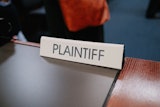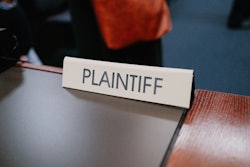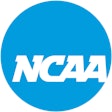
When signed into law in 1990, the Americans with Disabilities Act (ADA) was intended “to provide a clear and comprehensive national mandate for the elimination of discrimination against individuals with disabilities” (42 U.S.C. 12101 (b)(1).
The ADA states that “no individual shall be discriminated against on the basis of disability in the full and equal enjoyment of the goods, services, facilities, privileges, advantages, or accommodations of any place of public accommodation by any person who owns, leases, or operates a place of public accommodation” (42 U.S.C. § 12182). Accordingly, sports stadiums must be “readily accessible to and usable by individuals with disabilities” (42 U.S.C. § 12183(a)(1).
While the ADA has been instrumental in increasing access to sports facilities, there is still the question of whether spectators using wheelchairs, once inside the facility, have adequate sightlines to view the events they came to see. A good example of how the ADA examines whether a stadium has adequate sightlines for spectators using wheelchairs in sports facilities is Landis v. Washington State Major League Baseball Stadium Public Facilities District, 11 F.4th 1101 (9th Cir. 2021).
ADA guidelines
Clark Landis and other plaintiffs in the case are baseball fans with qualifying disabilities under the ADA. The plaintiffs, all of whom use wheelchairs for mobility, sued the four entities that own and operate T-Mobile Park, the home of the Seattle Mariners since 1999. The four entities are: 1) Washington State Major League Baseball Stadium Public Facilities District; 2) Baseball of Seattle Inc.; 3) Mariners Baseball LLC; and 4) The Baseball Club of Seattle. The plaintiffs argued that the owners and operators of the stadium failed to comply with the requirements of the ADA. In particular, the plaintiffs argued that the stadium had violated ADA and Department of Justice regulations by failing to “provide people with physical disabilities … lines of sight comparable to those for members of the general public” (28 C.F.R. pt. 36, App. A, § 4.33.3).
To determine whether stadiums have complied with the ADA, the DOJ has implemented regulations that stadiums must meet the minimum standards set by the Architectural and Transportation Barriers Compliance Board, commonly known as the Access Board. Section 4.33.3 of these guidelines governs the placement of accessible seating at places of public accommodation, such as T-Mobile Park. According to the guidelines, wheelchair areas shall be an integral part of any fixed seating plan and shall provide people with physical disabilities a choice of admission prices and lines of sight comparable to those for members of the public.
At trial, the owners and operators of the stadium argued that they provided spectators using wheelchairs at T-Mobile Park with adequate sightlines over standing spectators. In support of this position, the owners and operators relied on a facility expert who compared two sections of the stadium with the Accessible Stadiums guidelines. Based on this comparison, the defendant’s expert concluded that spectators using wheelchairs were able to see over the shoulders and between the heads of people in the row immediately in front of the accessible seating, and over the heads of people in the next row forward.
Obstructed view
The plaintiffs’ expert disagreed. After evaluating the sightlines of spectators in wheelchairs, the plaintiffs’ expert determined that the sightlines of spectators using wheelchairs were nearly always more obstructed than the sightlines of spectators not using wheelchairs. In seating section 135, for example, when viewing the side of the field, spectators using wheelchairs could see 8% of the field, while spectators not using wheelchairs could see 41% of the field. When viewing the infield, spectators using wheelchairs could see 31% of the field, while spectators not using wheelchairs could see 100% of the field. When viewing the outfield, spectators using wheelchairs could see 66% of the field, while spectators not using wheelchairs could see 86% of the field. Finally, when viewing the field generally, spectators using wheelchairs could see 36% of the field, while spectators not using wheelchairs could see 71% — nearly twice as much of the field.
The district court, relying on Section 4.33.3 and the defendants’ expert’s testimony, rejected the plaintiffs’ sightline claim and concluded that the stadium’s sightlines were adequate for spectators using wheelchairs. In particular, the district court dismissed the plaintiffs’ expert’s conclusion that the second requirement was not satisfied because spectators using wheelchairs did not have a comparable view over the heads of standing spectators. The district court did not discuss whether spectators using wheelchairs could see over the heads of the spectators standing two rows in front of them. However, the plaintiffs’ expert’s exhibits and his testimony explaining the exhibits made clear that one line represented the head of a spectator two rows in front and the other line represented the shoulders of a spectator one row in front.
On appeal, the court held that the question presented was whether spectators using wheelchairs at T-Mobile Park have adequate sightlines under the ADA as implemented by the DOJ’s Accessible Stadiums. The plaintiffs argued that the district court erred by analyzing only the first requirement: that wheelchair areas shall be an integral part of any fixed seating plan and shall provide people with physical disabilities a choice of admission prices and lines of sight comparable to those for members of the public. They argued that the district court failed to address the second requirement of the guidelines: that spectators using wheelchairs had a comparable view over the heads of standing spectators.
After reviewing the facts and the DOJ’s guidelines, the appellate court held it was not satisfied that the district court analyzed the second Accessible Stadiums requirement. As a result, the appellate court vacated the district court’s decision concluding that the stadium satisfies the ADA by providing comparable sightlines for spectators using wheelchairs. In overturning the district court’s ruling, the appellate court sent the case back to the district court for further proceedings so that it could perform a complete analysis of the Accessible Stadiums requirements.
Equal, comparable, adequate
With the appellate court’s decision that spectators with wheelchairs at T-Mobile Park did not have comparable views over the heads of standing spectators as non-wheelchair spectators, several lessons can be learned by facility owners, operators and architects.
First, as most facility owners, operators and architects already know, wheelchair areas need to be an integral part of any fixed seating plan and must provide people with physical disabilities a choice of admission prices and lines of sight comparable to those provided for able-bodied patrons. However, just providing space for people in wheelchairs is not enough. Section 4.33.3 requires facilities to “provide people with physical disabilities … lines of sight comparable to those for members of the general public.” As the appellate court noted in Landis, comparable sightlines for individuals with disabilities means more than just seeing the field. While maybe not equal, comparable means more than just providing adequate lines of sight.
Second, in considering whether lines of sight are comparable, facility owners, operators and architects need to make sure that people in wheelchairs can see over the line representing the standing spectator’s shoulders. This line of sight means that people in wheelchairs need to see over the shoulders and between the heads of the people in front of them and see more of the field of play than not.
Third, while the owners and operators of T-Mobile Park may have had an army of architects and hundreds of millions of dollars to ensure that the facility they built met all the requirements of the ADA, it is important to know that the ADA guidelines apply to all sports and recreation facilities. Therefore, it is vital that facility owners and operators at all levels of sports and recreation are aware of the ADA and all its required guidelines.




































